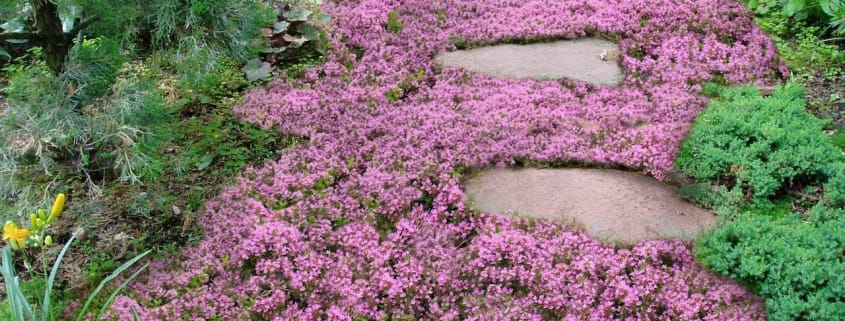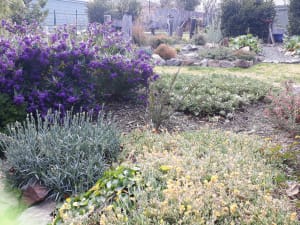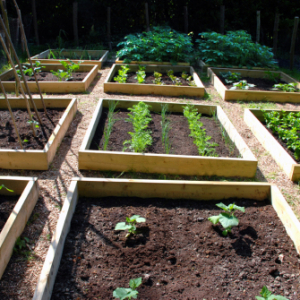It’s a cover up!
Customers regularly ask me to suggest a groundcover for a particular situation in a garden and with so many different forms, both Australian and introduced, the decision usually comes down to what you actually what the plant to do.
Ground cover plants vary from conifers through Australian natives to perennials and introduced plants from outside Australia. Many are absolute ground huggers and others can reach 50-70cm high but can be as wide as 3-4m.
There are categories that will tolerate first line coastal to varieties that can handle severe frosts and low water. Others are shade tolerant and many are edible, like herbs.
We will start with first line coastal. Many of the plants that suit this situation are Australian natives and a stroll along coastal gardens and natural areas will soon give an indication as to what species are handling this difficult growing area.
Species such as Carpobrotus (an Australian native succulent) are very good for dune stabilisation along with Banksia and Westringia, which both have groundcover varieties, as do Myoporum and Hakea. A good non-Australian plant is the Shore juniper (Juniperus conferta) that will mat well and stabilise sandy soils.
Moving away from direct coastal we then move into more protected locations with heavier soils and not so much wind. In open sunny positions in these locations the list is endless. Australian natives include Grevillea, Leptospermum, Callistemon and Banksia with many others that are softer perennial types including Scaevola and Brachyscome.
Non-Australian plants include groundcover camellia (Marge Miller and Snow), carpet roses, Cotoneaster dammeri, Convolvulus … and the list goes on.
Shaded gardens are always a bit of a problem but here also there are many plants that can be used in combinations with perennials including camellias, Chinese star jasmine (often used as a climber) and the very beautiful Gumpo azaleas.
Herbs are the most likely category of groundcover that do not get much of a mention but there are many of great benefit. These can be used to cover paths within the herb and vegetable garden or to cover a retained area within the garden. Several varieties of thyme are suitable for walking on and prostrate rosemary also falls into this category.
The ground preparation for groundcover plants is the same as for all other plants with the inclusion of some compost mixed with the existing soil to give the plants a good start.
There is a common mistaken belief that ground cover plants will provide weed suppression. There might be some weed suppression but generally weeds will still grow through the groundcovers and will be very hard to remove after the plants have established.
Ideally the best method is to lay down several layers of moist newspaper and cover with a moisture retentive mulch prior to planting and then pull paper and mulch aside sufficiently to make the planting hole. Plant the plants and then water in and pull paper and mulch back around the plant. Over the period the newspaper takes to decompose, the weeds would have most likely died. Some careful hand-weeding and spot-spraying after that will ensure the garden stays weed free.
Every garden has different requirements so it is important to seek qualified advice before making your choice. Your local nursery person will have many years of experience to help you make the right choice to complete this very rewarding project in your patch.



